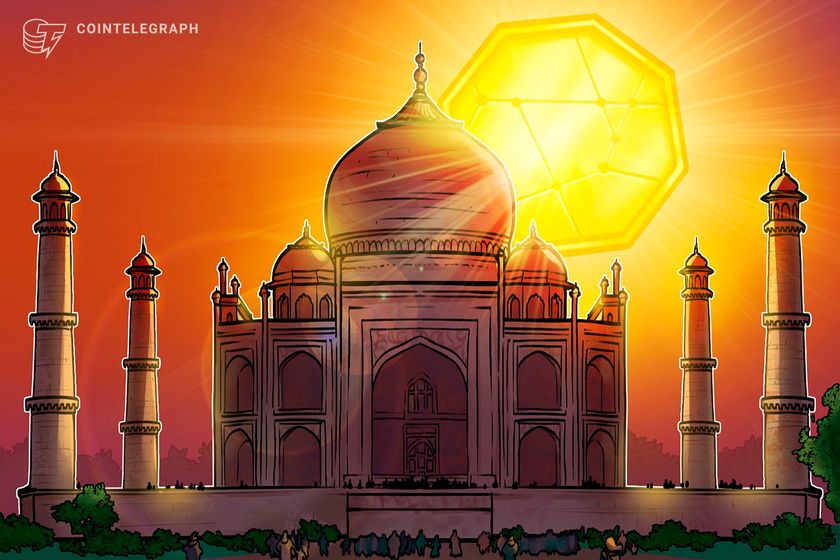MahaKumbh signaled India’s readiness for the metaverse


Opinion by: Shubham Kukrety, co-founder and CEO at QuoteIt
Strange sights were seen as India recently concluded MahaKumbh, a Hindu congregation that occurs once every 144 years.
Every day, a man took dips at Sangam — the triple confluence of rivers Ganga, Yamuna and Sarasvati — with several passport-sized photographs offering “Digital Snan,” symbolizing digital nectar baths. A nine-acre camp offered people a glimpse of the Hindu religion since the beginning of time. Several families received a 360-degree live virtual MahaKumbh tour with a VR box and packaged pure Sangam water at their homes.
These are some of the sights that were seen for the first time in MahaKumbh’s known history. But all of it brings us to a fascinating question: Does the fusion of tech and tradition help us peek into India’s future of the metaverse? Indeed.
Adopting technology religiously
India’s approach to technology has always been unique. The country has previously leapfrogged many traditional technology adoption cycles. For example, it moved directly to mobile-first digital experiences without many households ever seeing a landline. As immersive technologies gain traction, the country shows signs of its distinctive adoption pattern.
Over the past few years, digitization of religious experiences has surged in India. The VR Devotee app, launched in 2016, streamed rituals and festivals from over 150 temples, allowing devotees to participate virtually. During COVID-19, the platform saw a remarkable 40% jump in user engagement.
The Indian government, recognizing this potential, launched “Temple 360” in 2022 — a web portal providing virtual darshan (viewing of deities) from significant pilgrimage sites. When the famous Puri Jagannath Rath Yatra was held without public attendance for the first time in 2020, millions watched live. The same holds for nearly all pilgrimages in India.
What’s particularly striking about MahaKumbh?
Immersive technologies were embraced at one of Hinduism’s most sacred gatherings, which saw over 663 million people make pilgrimages. If deep spiritual traditions can incorporate digital experiences, it signals a profound cultural readiness for adoption.
From skepticism to frontier tech
Under the Digital India initiative, AR/VR is explicitly identified as an emerging technology alongside AI, blockchain and 5G networks. And this isn’t mere lip service.
The government has backed its words with concrete actions, establishing Centers of Excellence like VARCoE at the Indian Institute of Technology Bhubaneswar and launching initiatives such as IMAGE to incubate extended reality (XR) startups. In 2022, the MeitY Startup Hub partnered with Meta to launch the XR Startup Program, extending grants worth 20 lakh Indian rupees (~$23,000) to 16 startups.
Recent: Indian town adopts Avalanche blockchain for tamper-proof land records
The Uttar Pradesh government recently launched a 3D VR experience center in Ayodhya. Multiple Hindu religious places, including Kashi Vishwanath Dham and Maa Vaishno Devi Bhawan, have already extended such immersive experiences.
This deliberate strategy can prove to be a catalyst in India’s XR adoption, tapping the nation’s rich cultural heritage.
Corporate giants embrace the immersive future
Perhaps the most telling sign of India’s metaverse readiness comes from its corporate landscape. Reliance leads the charge, headed by Asia’s richest person, Mukesh Ambani. In a landmark development, Jio Platforms recently partnered with Polygon Labs to integrate Web3 and blockchain capabilities into its existing digital ecosystem.
The partnership is no small feat. It potentially brings Web3 functionality to Jio’s vast user base of over 482 million customers. Jio had previously demonstrated its commitment to immersive technologies by unveiling “Jio Glass,” an affordable mixed-reality device designed for the Indian market. Reliance’s acquisition of Tesseract in 2019 and recent discussions with Meta underscore its long-term bet on immersive futures.
The country’s largest telecom provider is strategically investing in metaverse-enabling technologies. This speaks volumes about the future of digital experiences in the country.
This year, after announcing its partnership with Polygon, Jio also launched its mystery JioCoin, a significant development for the Indian Web3 community. Meanwhile, the Indian Railway Catering and Tourism Corporation also issued non-fungible (NFT) train tickets on the Polygon blockchain to passengers traveling to the MahaKumbh festival.
These initiatives tapped Polygon specifically for its faster throughput and low gas fees — practical considerations that signal maturity in blockchain implementation in India.
Differing perspectives and the elusive mainstream moment
Not everyone is convinced that digitizing sacred experiences represents progress. The “Digital Snan” service for 1,100 rupees in Sangam triggered a significant backlash on social media. Critics viewed such services as commercializing spirituality and reducing sacred rituals to transactional experiences.
Furthermore, it’s been over eight years since Pokémon Go took the world by storm, demonstrating AR’s potential to create cultural phenomena that transcend demographic boundaries. The world hasn’t seen anything of that magnitude ever since.
This absence of a defining moment also raises questions about whether immersive technologies will achieve the ubiquity that smartphones have at present. Mall VR arcades attract curious teens for one-off experiences, but habitual usage patterns haven’t materialized outside specific professional contexts.
Green shoots of adoption?
What distinguishes India’s potential metaverse from Western models is its grounding in cultural contexts with profound meaning for millions. While Silicon Valley envisions virtual offices and digital asset speculation, India’s early applications focus on democratizing experiences of profound cultural significance.
This culturally rooted approach could ultimately prove more sustainable. By addressing genuine human needs — connection to heritage, participation in community rituals, access to experiences otherwise impossible due to distance or disability — India’s metaverse initiatives may find the elusive “why” that has hampered mainstream adoption elsewhere.
Opinion by: Shubham Kukrety, co-founder and CEO at QuoteIt.
This article is for general information purposes and is not intended to be and should not be taken as legal or investment advice. The views, thoughts, and opinions expressed here are the author’s alone and do not necessarily reflect or represent the views and opinions of Cointelegraph.



